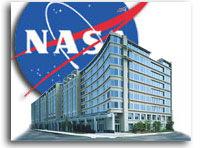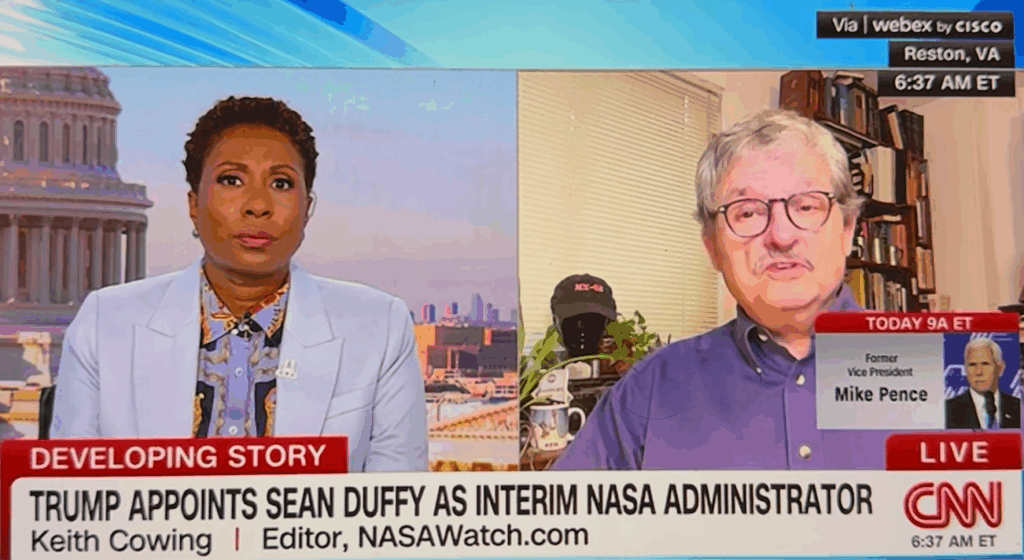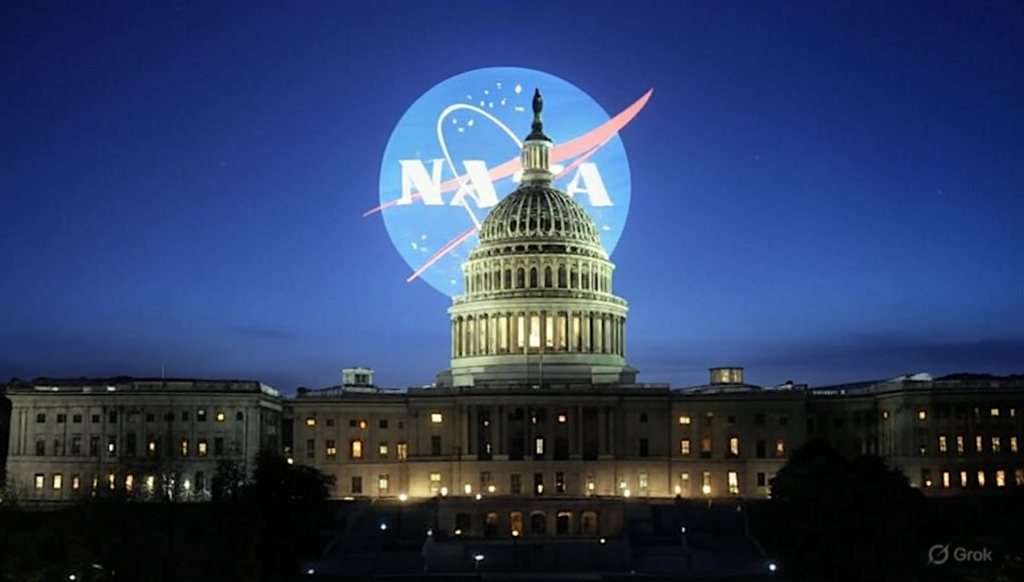NASA Discovery Mission Selections Announced

NASA to Hold Media Call for Discovery Program Announcement
“NASA will discuss the results of its latest Discovery mission selection during a media teleconference at 4 p.m. EST on Wednesday, Jan. 4. Members of the public also may submit questions to be answered during and immediately following the briefing using #AskNASA.”
Streaming audio of the briefing will be available on this page: https://www.nasa.gov/nasalive
NASA Selects Two Missions to Explore the Early Solar System
“NASA has selected two missions that have the potential to open new windows on one of the earliest eras in the history of our solar system – a time less than 10 million years after the birth of our sun. The missions, known as Lucy and Psyche, were chosen from five finalists and will proceed to mission formulation, with the goal of launching in 2021 and 2023, respectively.”









I am very excited for this – the Discovery Missions are amazing. Great work is being done.
These are indeed excellent selections. The Discovery and New Frontiers programs have demonstrated outstanding success, and I’m sure that these two missions will continue the legacy. I am particularly excited by Psyche, which will feature electric propulsion for yet another NASA endeavor.
Actually, the use of electronic propulsion seems a bit backwards. Psyche’s payload includes a magnetometer, and electric propulsion systems use big, fixed magnets. Getting good data will be challenging. On the other hand, Lucy isn’t going to carry a magnetometer, is going farther (5.2 versus 3 AU) and will visit multiple asteroids. If only one of the missions were going to use electric propulsion, I would have expected it to be Lucy rather than Psyche.
Psyche uses Hall thrusters for its electric propulsion. These have electromagnets, not permanent magnets. You just turn off the thruster when you want to make magnetic measurements. NASA’s selection makes sense, very cool mission.
Well, that took some digging (and I’m going to have to do some Wikipedia edits, since some digging showed they have some errors on the subject, e.g. Lucy using electric propulsion.) But it is a Hall thruster (a Loral SPT-140 if anyone cares.)
That’s interesting, since NASA was offering a NEXT thruster (Kaufman) as free government-furnished equipment, the Psyche team has people and institutions with Deep Space One and Dawn experience (both of which used Kaufman thrusters of the XIPS/NSTAR/NEXT line), and they are talking about using Dawn heritage hardware.
I’m still concerned however. Electromagnets use a high permeability core (unless you want to eat a large increase in power consumption.) So, from a magnetic cleanliness point of view, they don’t disappear when you turn the switch off.
It also looks like they are using a 2-m boom for the magnetometer. That’s sounds awful short by the standards of scientific magnetometers. Cassini’s boom is 10-meters (although the outboard magnetometer failed, and the inboard one is at 5 meters.) As I said, I think this is going to be challenging,
And, please understand, I’m not criticizing the selection or the mission. I just think that Psyche, by combining electric propulsion and a magnetometer, will have some problems extra problems to solve. Personally, I would have done it with a small, very magnetically clean, sub-spacecraft, deployed after getting into orbit around the asteroid. But that’s just me. I also think Lucy could have benefited from electric propulsion. But that’s not saying there’s anything wrong with their approach; If I say I like Van Gogh’s use of color better than Picaso’s, it doesn’t mean I think Picaso was a poor artist.
They appear to have two magnetometers, the inner one is almost certainly to help them subtract any residual magnetic uncleanliness from the spacecraft. Plus those thrusters appear to be another 3 meters or so away from even the closest magnetometer. I would be floored if they weren’t grilled on this in the review process and didn’t have the numbers to back themselves up.
Using two magnetometers, usually an inboard/outboard pair, is very common. For exactly this reason. But two meters for the boom and lots of magnetically permiable material in electromagnet cores is going to be a serious concern.
I’m not saying that this problem can’t be solved. I’m saying that it will take quite a bit of work. There may or may not been easier ways to do it, or avoid it. But that doesn’t mean their approach won’t work, and I hope I didn’t imply that.
In terms of getting grilled in the review process, I’m sure magnetic cleanliness got some attention. But, at this stage, they just have a mission concept study, not a fully spacecraft design. In fact, they don’t even have a preliminary design until the PDR at the end of phase B. At this point, the reviews would make sure that they know about the issues, have a viable plan for solving them, and enough time and money to come up with a solution (plus margin to come up with a plan B if plan A doesn’t work.) The actual solution and implementation is what phase B and C are for. I suspect magnetic cleanliness is going to account for an unusual large fraction of the phase B/C work.
Outer solar system missions often make less sense for using SEP, not more. You have to have a solar array large enough not only to keep the spacecraft alive, but to put something like a kiloWatt or more through the thruster while far from the sun. That means the spacecraft needs a -very- large array which provides excess power near the Earth and is extra mass to drag along.
I’ve never agreed with that logic, but I can see how it would drive a proposal in that direction. Using SEP to get to the outer solar system is counterintuitive, and that’s one of the last thing you want in proposal. You don’t have the page space to explain in great detail why it really does make sense, and one reviewer saying, “I’m not convinced,” could sink the proposal.
However, a solar array giving you 10 kW at 1 AU (e.g. Dawn) for electric propulsion would give you 370 W at 5.2 AU. If you design the trajectory properly, you can do most of the thrust arcs inside 2 AU or so, with instruments off and fairly low telemetry rates for engineering and navigation. You can arrange it so that the delta-v to stop at a jovian trojan point is relatively small. Then, once there, that same (large but not huge) solar array gives you enough power for instruments and transmit science data back to Earth at a nice, healthy rate.
Not for a mission like Lucy. The problem is that one generally does have to maneuver in the outer solar system – you can’t just set up a fly-by of an outer solar system body using only delta-V applied in the inner solar system. For the science return, you’ll want to pass at a close range but the target bodies (for Lucy) only have crudely known ephemerides. So you have to walk your way in with optical navigation or other techniques. Thus, you will still need significant delta-V in the outer solar system to set up the fly-by, to maybe bend the trajectory to fly-by yet more objects, or to enter an orbit.
A “big” thruster like NEXT or NSTAR is useful for applying a large delta V in the inner solar system, but it can’t be throttled down to an arbitrarily small delta-V. The lower limit is usually something above 500 Watts, which, if you need that power at 5 AU or whatever, that will drive you to a large solar array.
I think you’re overstating the delta-v required to target flybys. Consider Cassini (since I have the numbers for that mission.)
Between orbital insertion and December 1, 2009, the spacecraft made 76 targeted flybys. I don’t think the delivery accuracy was ever worse than 5 km, and typically sub-kilometer. The ephemeris for the icy satellites was not very well known at the start (most of them are in resonant orbits, which makes life more complicated) although Titan was fairly well known. Navigating through these encounters, and all the other maneuvers required for thing like controlling occultation timing, required 517 meters per second of delta-v. That’s 6.6 m/s per encounter.
In some ways, Lucy is going to have a slightly easier job, since the encounters are farther apart (four in 14 months, during the baseline L4 pass, while Cassini averaged a bit over one encounter per month during the above interval.) Targeting five Trojan asteroid encounters isn’t likely to require more than 50 m/s. That’s in comparison to over a kilometer per second for deep space maneuvers (1214 m/s according to one Lucy facts sheet I found, although that’s all preliminary at this point.)
In any case, people have done some real analysis of solar electric missions to trojan asteroids (http://www.hou.usra.edu/mee… How “Lucy-like” those are is an open question, since we don’t know if they would have satisfied the same mission requirements (the full, gory details, which aren’t available, not the more vague, level one requirements which are quoted in press releases.)
I think the big advantage for conventional propulsion is heritage and simplicity. No one would question LMA’s ability to build a solar-powered spacecraft which can operate at 5.2 AU and which uses conventional engines. If your proposed mission can be accomplished that way, why complicate things? Engineers and managers in the field disapprove of expending extra resources to exceed requirements.
The rationale for using SEP is the significant reduction in propellant mass due to the order of magnitude improvement in Specific Impulse (Isp). This yields a less massive spacecraft, which can be launched on a smaller, less costly launch vehicle. The improvement in Isp also enables greater changes in overall mission velocity (i.e., more complex maneuvers and changes in trajectory).
Good outcome, but sad to see Venus neglected once again
Interesting comment. When I first read it and thought about Venus science the Soviet Venera missions came to mind, one of which actually sent back images from the surface. The work done by the Soviets in a series of truly groundbreaking missions as they probed with ever-stronger equipment to cope with what killed the previous missions: deadly pressure and temperatures not imagined.
One mission actually used sugar to dissolve at the appropriate time as part of the parachute system. Quite creative. Others used inventive cooling methods.
Anyway my thinking was that we’ve characterized a very dead planet.
But is that true? Can’t know without more study, but based on what we DO know Venus appears to be a very uninteresting place.
Well, the Venus orbiter proposal (VERITAS), must have interested someone. But I don’t think too many people were excited by it. Comparative geology of terrestrial planets is a fine thing to do, and if NASA could manage to fly Discovery missions more often, I’d be all for it. But when we’re down to three or four Discovery opportunities per decade, it isn’t on the top of many people’s list.
The other Discovery mission, however, would have been different. DAVINCI would have been a decent probe measuring the composition of the atmosphere, specifically isotope ratios and noble gas abundance. That gets into the origin and evolution of planetary atmospheres, and the past measurements aren’t good enough (e.g. to resolve questions like water being of cometary versus primordial origin.) The instruments technology wasn’t there, the last time someone dropped a probe into Venus’ atmosphere, but it is now.
Has anyone seen a replay link for the “Media Call” that happened yesterday ? . . . would be nice to hear it again.
While the cost of development would be high for a reactor, the cost of additional flight units would be less and the hazards of launch much less than with RTGs since HEU is essentially nontoxic at launch. No other strategy can equal the capability of nuclear electric power in the outer solar system.